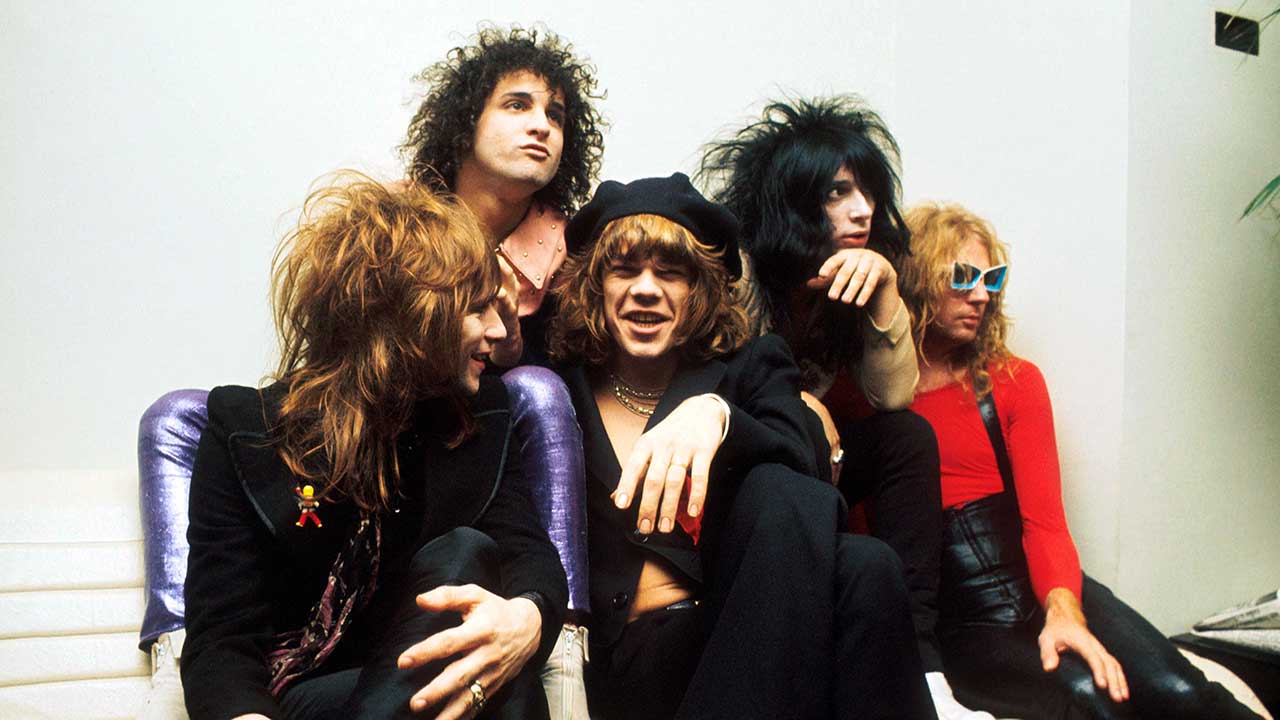And then there was one. As Lenny Kaye broke the news of the death of New York Dolls guitarist Sylvain Sylvain, fans were faced with a stark reality: of the five members of the band who made their debut album, only one remains: singer David Johansen.
For a band whose early career was marked by the kind of outrageous over-indulgence that's become a rock'n'roll yardstick, it's perhaps a surprise that the Dolls made it as far as 2004, when they reformed, going on to enjoy one of rock's most unexpected second acts.
Here are 20 facts you should know about the New York Dolls.

1. The band made a rather inauspicious live debut on Christmas Eve, 1971 at a homeless shelter in New York.
2. Original drummer Billy Murcia was drowned at the age of 21. While attending a party in London’s Cromwell Road the 19-year-old passed out under the combined influence of champagne and Mandrax and was subsequently drowned by those trying to revive him. His replacement, Jerry Nolan, died in 1992 after slipping into a coma that lasted for weeks.
3. Murcia and guitarist Sylvain Sylvain teamed up with bassist Johnny Genzale in a band called Actress. But Genzale switched to guitar and changed his name to Johnny Volume, before becoming Johnny Thunders. He got this idea from a DC Comics character named Johnny Thunder.
4. The band became The Dolls Of New York, taking their name from the Doll Hospital Of New York, where toys were repaired. This happened when their first stable line-up, also featuring frontman David Johansen and bassist Arthur Kane, was confirmed. They then changed the name to the New York Dolls.
5. The Dolls couldn’t get a record deal in the States, so they came over to London and opened for Rod Stewart at Wembley Arena on October 29. Also on the bill were The Faces and the Pink Fairies.
6. This performance led to several record label offers, but Murcia’s death nearly broke the band up. But the band returned to New York, brought in Jerry Nolan, and in 1973 signed to Mercury.
7. Their self-titled, debut album was produced by Todd Rundgren. It was recorded in eight days, and mixed in half-a-day.
8. At a label meeting to discuss possible producers for the first album, Johansen is said to have fallen asleep, and only woke up when Rundgren’s name was mentioned.
9. The album’s cover, which had the band in OTT drag, caused controversy and the label took out ads claiming, ‘Introducing the New York Dolls. A band you’re gonna like, whether you like it or not’. But the album didn’t sell at all well, despite the Dolls opening for Mott The Hoople on the band's 1973 American tour.
10. When The Dolls appeared on The Old Grey Whistle Test in November 1973, Johansen told host Bob Harris off air that he had ‘bunny teeth’. After the Dolls mimed Jet Boy, Harris cited them as ‘mock rock’. Some have claimed this actually triggered what would become a war between hippies and punks a short while later.
11. Second album - Too Much, Too Soon – got its title from a biography on doomed Hollywood actress Diana Barrymore.
12. Top producers and songwriters Jerry Lieber and Mike Stoller, were lined up to produce the album, but they withdrew shortly before recording was to start. The Dolls did one session with A&R man Paul Nelson, before eventually bringing in Shadow Morton, renowned for his work with 60s girl group The Shangri-Las, whom the Dolls loved.
13. The album only had two new original songs. Four of the tracks were old Dolls numbers they’d done as demos for Mercury in March 1973, and the rest were covers. This lack of new material was put down to the band’s drink and drugs problems, coupled with Morton’s own alcoholism.
14. On their cover of Bad Detective, Johansen impersonated fictional detective Charlie Chan, because the song’s narrative was set in China.
15. Despite getting a positive critical response at the time, the album was again a commercial flop, selling less than 100,000 copies in the States. A subsequent US tour was hit by cancelled shows, the band’s ongoing addiction problems and arguments between the five.
16. Soon-to-be Sex Pistols manager Malcolm McLaren tried to revive their fortunes. He changed their image, dressed them in red leather and got them to adopt a seeming Communist Party ethos. They even had a hammer & sickle flag. Johnny Thunders left during this period, and was briefly replaced by Blackie Lawless, who would later found W.A.S.P. After being dropped by Mercury, they split up.
17. By the time they reunited in 2004 – at the behest of pop miserabilist and Dolls fanboy Morrissey – Thunders was dead (in 1991), and Kane followed shortly after their comeback gig at the Meltdown festival in London.
18. Three albums followed. One Day It Will Please Us to Remember Even This arrived in 2006, with Aerosmith producer Jack Douglas at the helm, and Cause I Sez So was released three years later, produced by the men who'd handled their first: Todd Rundgren. A final album, Dancing Backward in High Heels, featuring Blondie guitarist Frank Infante, was released in 2011.
19. The same year, a line-up that included David Bowie guitarist Earl Slick went out on the road with Motley Crue and Poison on the 40-date Glam-A-Geddon tour. They never recorded.
20. The Dolls may never have sold the number of albums they deserved, but, like fellow New Yorkers the Velvet Underground, their legacy is found in their influence. "Everyone from Joe Strummer, Gene Simmons to Bret Michaels all said they were influenced by the New York Dolls," photographer Bob Gruen told Rolling Stone. "They each found their own thing about the Dolls. Some people it was the music, some people it was the look, some people it was the attitude. The Dolls had it all."

